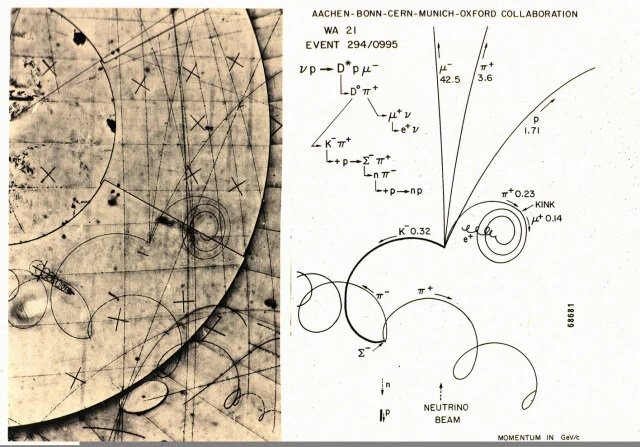Photon-Photon collisions induce W⁺/W⁻ production
CERN have announced observations of photon-photon collisions at the LHC. Photon-photon collisions are surprising as we don’t usually see them. In the room you’re in, you can see the far wall, unaffected by light travelling every-which-way across your line of sight. However these photons are very low energy. In the LHC, very high energies are involved.
The LHC fires protons (not photons) against each other at incredibly high energies. These protons interaction and these interactions involve virtual particles. These virtual particles represent different types of interactions, gluons are involved in the strong force, the W and Z are to do with the weak interaction, the photon is to do with the electromagnetic interaction (pedantically, the photon, W and Z are all part of electroweak).
Which interaction you get is a matter of probability, and when sifting the data, everything is jumbled up.
In CMS and ATLAS, Cern has noted very rare candidate collisions where a high energy muon and electron emerge back to back (a muon is a heavier, unstable version of the electron, both are leptons). What’s happening is that from time to time two quasi-real photons interact to produce a W⁺ and a W⁻. (I’m a little out of date here, but I think that Quasi-real implies high energy virtual particles, i.e. short range, i.e. rare)
The W⁺ and a W⁻ are massive and unstable, and each decays into charged lepton and neutrino.
As the W⁺ and a W⁻ are massive, the charged lepton and neutrino each emerge with very high kinetic energies, and the signal being looked at is where one W decays to a muon and the other to an electron.
This rare process occurs as bunches of high-energy protons skim past each other in “ultra-peripheral collisions”, if only their surrounding electromagnetic fields interact. Quasi-real photons from these fields scatter off one another to produce a pair of W bosons and leave a distinct signature in the ATLAS experiment. As the skimming protons stay intact, the only detectable particles produced in the interaction are the visible decay products of the W bosons – namely, for this measurement, an electron and a muon with opposite electric charge.
…A total of 307 events matching the selection requirements were found in the analysed dataset, of which 174 were attributed to be from the photon–photon production of W-boson pairs and the remaining events to various background processes. Such a yield corresponds to a statistical significance of 8.4 standard deviations, which is well above the established 5 standard deviations criterion for the unambiguous observation of a process. The cross section is measured to be 3.13 ± 0.42 fb. This means that only one or two such interactions occurred in the 30 trillion proton–proton interactions of a typical day of data-taking in 2018.
- ATLAS Update, 5th August 2020
Caveat
(The muon and electron are oppositely charged, and I’ve used ‘electron’ to refer generically to e⁻ and e⁺, the latter is often called a positron)







